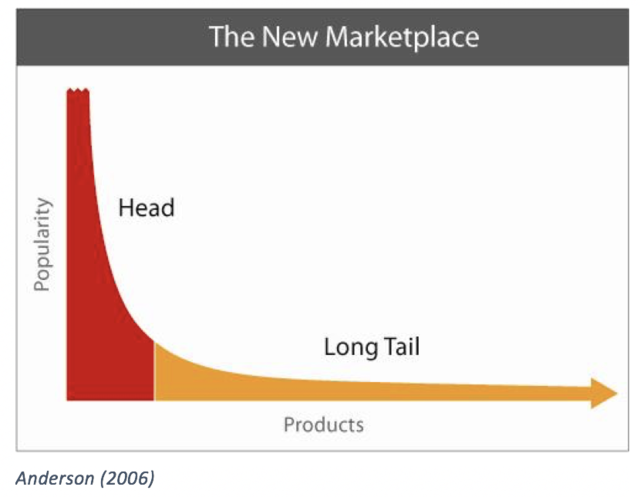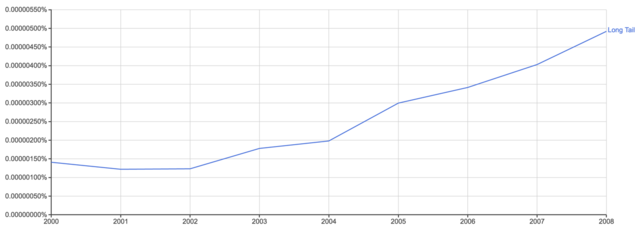Featured Article:A General Theory of Buzzwords: Synergistic Meta-Linguistic Paradigm Shifts
By
2017, Vol. 9 No. 02 | pg. 1/2 | »
IN THIS ARTICLE
KEYWORDS
Liz Lemon, frazzled executive producer of a struggling sketch comedy show and main character of the NBC comedy 30 Rock is trying to convince her boss, Jack Donaghy, that it makes sense to send the show’s staff to Miami for a week. This is no meager request, and will require a convincing presentation. When this is pointed out to her, she smiles and confidently claims that she can sell this. The camera cuts to her and her assistant standing in Donaghy’s opulent office, in front of his imposing desk, as she confidently recites a string of important sounding, vaguely corporate phrases: “Cross promotional! Deal Mechanics! Revenue Streams! Jargon!” and finally, dramatically, as she gestures at the sign her assistant is holding, “Synergy!” The music reaches a crescendo and abruptly cuts off as we pan to Donaghy’s face. He pauses briefly to consider, and then proclaims in a throaty whisper “That’s the best presentation I’ve ever seen. Get started right away” (Miller, 2010). The scene is a facetious take on business-speak and corporate discourse, but it might be more telling than just that. It is clear to the audience that the words that Lemon uses have precious little relevance to the situation at hand, but less apparent is that the words have little meaning at all. “Deal Mechanics,” for example, denotes and connotes almost nothing: it conjures no concrete notions and images in our mind’s eye and anyone other than a high ranking-businessman would likely be unable to express any sort of definition. Phrases like these are known as buzzwords, named for the excitement, or buzz, they tend to generate when injected into spheres of discourse. The phrase was coined in the middle of the twentieth century by Harvard students, and at that time was a form of slang referring to “key words in a lecture or reading” (Harper, 2016). The term has only assumed its current meaning something in the last two decades. Buzzwords are characterized by several key features. Firstly, as 30 Rock shows us, and as they are often criticized for, they have very little definitional significance. In other words, they have, through various different mechanisms, lost their meaning. Secondly, they have a general pattern of life cycle. They are adopted rapidly across entire industries and socio-political strata and proliferate every nook and cranny of those spheres. Their use escalates until they become merely a cliché, and their prevalence begins to dilute their power. Almost as quickly as they are born, they fall out of favor with the public, are relegated to the dusty annals of forgotten history and dead words. Finally, and perhaps most abstract, buzzwords connote with a very unique emotional significance. Their euphonious, almost self-aggrandizing nature instills in those who come upon them a sense of optimism, and an impression of the discourse they represent.My research question arises as a natural product of the increased presence of buzzwords in the zeitgeist. Websites in which buzzwords abound in headlines get more and more page views everyday, evangelical Silicon Valley CEOs all seem to use different permutations of the same words in their presentations and high ranking businessmen all seem to engage in the same incomprehensible doublespeak. The debate over whether this is a beneficial shift has reached a stalemate of sorts, both sides presenting a cohesive and consistent image of buzzwords. Some believe that buzzwords are linguistic parasites, latching onto an existing cultural sphere and draining it of its vitality, while others believe that language and buzzwords enjoy and thrive upon a mutual symbiotic relationship. To clarify this – or perhaps to simply explore if this is a debate that can be clarified– it is crucial to better understand buzzwords and why they specifically affect us so profoundly. Thus, my research question is “Through what linguistic and social mechanisms are buzzwords generated and proliferated?” Exploring this question leads us ever closer to constructing a general theory of buzzwords, and with that comes understanding of whether their force is innocent or insidious. Given that buzzwords affect this multitude of discourses and that – as the rest of this paper will make apparent – a plethora of subjects discuss them, the answer to the question cannot be reached by viewing buzzwords as an abstract entity in isolation. Instead, I look to perspectives from cognitive neuroscience, computational linguistics, education, political science and psychology. I argue that buzzwords are a circular and predictable phenomenon: their lives follow the same general trends and that the death of one begets the growth of another. This argument is framed by the lifecycle of a buzzword: its inception, its proliferation and eventual peak and finally, its inglorious decline. I begin by examining what makes a buzzword a buzzword. Must the stance of their progenitors in sociopolitical hierarchies be conducive to the generation of new words? Why do some words with emotional significance become buzzwords while others are consigned to less dubious pantheons? Following this, I track buzzwords as they escalate in popularity: examining their wake as they permeate ever higher levels of conversation. I consider them at their most saturated, and in doing so, explore what exactly it is about this point that makes them fall out of use so quickly and so universally. As a general case study, I take the life of the buzzword “Long Tail” and explore it through these multiple stages. The phrase “The Long Tail” refers to the “tail” of the demand curve, that is, the section of the curve that corresponds not to “hits” that sell in large quantities but rather to more niche products not as available through conventional channels. This paper is principally focused on one buzzword in the interests of expediting a preliminary model for buzzwords, but this same focus limits the sophistication of the model. Additional nuance can be generated – in additional works – by examining other buzzwords (as this paper will also do) and by exploring each stage of the life of a buzzword in greater detail. The Birth of a BuzzwordGiven that buzzwords are a relatively new social phenomenon, a natural supposition might be that their effect on us is transitory, more a social phenomenon than a deeply rooted cognitive process. Literature generally supports the opposite, however. Pennycook et al.’s amusingly titled “On the reception and detection of pseudo-profound bullshit” (2015), which explored this through computational linguistics, concluded that people tended to find meaningless, yet ‘syntactically coherent’ (p. 559) phrases at least somewhat profound, whether or not these were phrases found in the real world or produced by their ‘bullshit generator’. In conjunction with Kissler et al.’s “Early Cortical Responses to Emotional Words during Reading” (2007), which demonstrated that our brains respond faster to words with emotional significance than they do to more mundane words. Our susceptibility to buzzwords, thus, is a documentable psychological phenomenon: an extension of our capability to, for example, recognise the face of a loved one immediately. That buzzwords carry an explicit cognitive weight speaks to the importance of understanding them more precisely, but the literature neglects a crucial issue: why words become buzzwords in the first place. The vast majority of literature takes buzzwords as an axiom of culture without questioning their presence, but doing so is the linchpin of a comprehensive understanding of them. The phrase “the long tail” first appeared in a 2004 Wired article by then-chief editor Chris Anderson entitled “The Long Tail,” which he subsequently expanded into a 2006 book of the same name. The article – in which Anderson argues that access to online distribution and marketing allows us to discover products other than the popular, commonplace “hits” – is notable, then as it is the site of the birth of a buzzword. Therefore, examining it in detail provides an appropriate initial model for the birth of buzzwords. Despite the burden of having to introduce the notion of a Long Tail, Anderson refrains from using the phrase too frequently. The words “Long Tail” occur fewer than 20 times in an article that is over 5000 words long, and are in fact first used after a third of it is already over. Anderson is able to do this without losing the reader because the denotation of the phrase is hardly abstruse: it refers simply to a particular section of the demand curve, and does so by simply describing that portion’s shape. The phrase – while undoubtedly new – requires no leap of logic or faith. There are no knotty new ideas to grapple with, and it does not obscure its own meaning. That said, it is not a soulless, bland phrase either. It rings of a certain new-era-of-social-science affectation, reminiscent of such notions as Malcolm Gladwell’s “The Tipping Point,” which proposed an equally novel social theory. Anderson’s book is simultaneously a pseudo-scientific treatment of The Long Tail – it introduces such social constructs as “the three forces of the Long Tail” – and a eulogy for the hits, to whom Anderson pronounces an abrupt death. The book does not bow to the novelty of its content but continues to take itself seriously, conveying to the reader that it is talking about important ideas. In doing so, it establishes its own credibility and allows the reader to take it seriously. Thus, the introduction of the idea of the Long Tail takes a deeper root in the public psyche, allowing it to proliferate more naturally. This credibility is naturally reemphasized by Anderson himself, who at the time of publishing was the editor of Wired and had previously been at The Economist. Having been part of two publications of high stature, Anderson was clearly perceived to be well-placed to comment on contemporary social phenomena and so people were predisposed to take his word seriously. We can thus extrapolate key several characteristics of buzzwords at the time of birth from the example of “The Long Tail.” Firstly, their source need not intend the phrase as a buzzword but rather a new way of framing an issue. Secondly, neither the phrase nor the meaning it captures are particularly complex. They require only a simple extension of existing, familiar impressions. Thirdly, the phrase has a very specific emotional connotation and mellifluous sound that captures much of the same emotion as previous buzzwords. Fourthly, and finally, the source’s credibility is reinforced through contextual cues and treatment of the phrase. Thus, perhaps a phrase’s status as a buzzword is not by virtue of its emotional connotations, but rather the confluence of these various characteristics. This gives the buzzword a very particular and unique cognitive weight. How a Buzzword GrowsGiven that Anderson’s book made the New York Times Non Fiction Best Sellers list and was shortlisted for several business book awards, suffice it to say that the book – and by extension the notion of ‘The Long Tail’ – pervaded the public consciousness. Clearly, the social infrastructure for the word’s proliferation was in place and coming across the word was not a difficult thing to do. Other magazines begun publishing offshoot theories, and books about similar topics started being published (amongst them books with such evangelical titles as “How to Sell at Margins Higher Than Your Competitors: Winning Every Sale at Full Price, Rate, or Fee”). Regardless of whether their publication was inspired by Anderson’s or simply a spectacular coincidence, the phrase became more and more widely recognizable. This manifested in a widespread and rapid increase in its usage, continuing until 2008. Jack Grieve, a forensic linguist at Aston University, examines the adoption of new words into the American English lexicon in “Analyzing lexical emergence in Modern American English online” (2016). The paper focuses on the introduction of new words into the online sphere, a helpful distinction as buzzwords too generally percolate across a specific discipline before becoming more wide reaching. Through quantitative statistical analysis, Grieve et al. identify 29 ‘emerging word forms’ (p. 2) and examine these words from various standpoints to understand their spread. They identify 4 key features of the spread. Firstly, he identifies that these most widely adopted words tend to be slang phrases, extremely informal ways of capturing a common sentiment. They are phrases, therefore, that resonate with those most active in that particular sphere of discourse. As the words become more and more common and their novelty wears off, usage of the word becomes more casual, reinforcing its status as slang. The cycle is self-selecting, therefore: it strengthens the properties that allow it to exist. Secondly, as the word proliferates across conversation, Grieve et al. find that its structure changes as well. This most commonly takes the form of phrase truncation to facilitate versatility of definition. The paper takes as an example the phrase ‘on fleek’, originally intended as a description of one’s shapely eyebrows. The paper describes how ‘Seven out of the first ten usages of fleek co-occur with a form of the word eyebrow’, while ‘of the final ten occurrences only three usages of fleek occur with a form of the word eyebrow’. Today, ‘fleek’ is used to describe something of high quality and which carries itself well. This truncation of phrase, therefore, has lead to greater interpretive flexibility, allowing the word to be used in more diverse contexts and therefore facilitating its spread. Thirdly, these phrases engage in what Grieve et al. term ‘Onomasiological Competition’ (p. 31). Onomasiology is a lexicographic branch of linguistics concerned with words and the meanings they represent, and more specifically the question of how one can express a particular notion. Onomasiological competition, therefore, describes, the competition between two words that express much the same notion. If – instead of considering an emerging term in isolation – we consider the frequency of the emerging term and the pre-established term as compared to each other, we find ‘a decrease in the amount of variance in the alternation between these two forms over time’. In other words, the proportion of people who start using the emerging term at the cost of the established term while wishing to express the same idea is consistently increasing. Onomasiology’s close cousin, Semasiology is the subset of semantics concerns itself with what notions a particular word denotes, regardless of how it is actually pronounced. As words proliferate, there is a perceptible shift on the Semasiological axis, as well. Much of this is encapsulated in the above discussion of phrase truncation to enable interpretive flexibility, but Grieve et al. also describe shifts of common terms away from their denotational meaning: ‘unbothered is used not just to mean not bothered but happily oblivious, joggers is used primarily to refer to jogging pants rather than people who jog, […] and MVPs is used to refer to valuable people in general as opposed to players in sports leagues.” This analysis – out-of-touch grandparent tone and all – reveals a profound shift in the way we think about and use these words. Granted, not all words that rise to prominence on the internet are buzzwords, and not all buzzwords are words that rise to prominence on the internet. However, in their growth, they exhibit much of the same behavior and so it is at least moderately justified to consider these words as a model for the shift of buzzwords. Hence, we can extend our current model of buzzwords to account as well for their growth. Buzzwords, we find, are part of a syntactic class that resounds with those most involved in that sphere. What this means is that on the internet, buzzwords may take the form of casual slang; in the corporate sphere, they might be more formal socio-economic vernacular. As they grow, these words tend to become more interpretively flexible, a conclusion also reached by developmental policy experts Andrea Cornwell and Karen Brock in ‘What do buzzwords do for development policy? a critical look at ‘participation’, ‘empowerment’ and ‘poverty reduction’.’ (2005). They argue that buzzwords, as time goes on, they have their multiple interpretations stripped away. We see that people start using buzzwords at the cost of other, pre-established terms to express the same ideas and that they are not necessarily used to express their literal meaning. As buzzwords become more common, they bring with them several productive additions to discourse. Bernadette Bensaude Vincent, in “The Politics of Buzzwords at the Interface of Technoscience, Market and Society: The Case of “Public Engagement in Science” (2014), through a linguistic review, argues that buzzwords can positively reframe and facilitate discourse in intensely technical spheres. Marketing lecture Robert Cluley, in “What makes a management buzzword buzz?” (2013), discusses how buzzwords bring 3 principal benefits to managers.Continued on Next Page » Suggested Reading from Inquiries Journal
Inquiries Journal provides undergraduate and graduate students around the world a platform for the wide dissemination of academic work over a range of core disciplines. Representing the work of students from hundreds of institutions around the globe, Inquiries Journal's large database of academic articles is completely free. Learn more | Blog | Submit Latest in Linguistics |




















